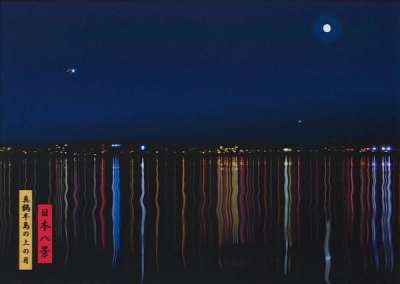
View Of Loop Bridge Seen From Route 41 In The Seven Falls Area

View Of Loop Bridge Seen From Route 41 In The Seven Falls Area
Signed Print
Julian Opie
£1,900-£2,900Value Indicator
$3,750-$5,500 Value Indicator
$3,350-$5,000 Value Indicator
¥17,000-¥26,000 Value Indicator
€2,250-€3,450 Value Indicator
$18,000-$28,000 Value Indicator
¥360,000-¥560,000 Value Indicator
$2,350-$3,600 Value Indicator
AAGR (5 years) This estimate blends recent public auction records with our own private sale data and network demand.
There aren't enough data points on this work for a comprehensive result. Please speak to a specialist by making an enquiry.
Medium: Lenticular
Edition size: 50
Year: 2009
Size: H 90cm x W 125cm
Signed: Yes
Format: Signed Print
TradingFloor
Track this artwork in realtime
Watch artwork, manage valuations, track your portfolio and return against your collection
Track auction value trend
Auction Results
| Auction Date | Auction House | Location | Hammer Price | Return to Seller | Buyer Paid |
|---|---|---|---|---|---|
| January 2024 | Phillips London | United Kingdom | |||
| September 2023 | Phillips London | United Kingdom | |||
| October 2016 | Phillips New York | United States |
Meaning & Analysis
Typical of the artist’s landscape prints produced throughout his career, View Of Loop Bridge Seen From Route 42 In The Seven Falls Area, is a print from Julian Opie’s Japanese Landscapes series (2009). This print is indicative of Opie’s extensive knowledge of Japanese art, taking inspiration from the woodblock prints of Utagawa Hiroshige.
Opie explores the idea of travel and motion in View Of Loop Bridge Seen From Route 42 In The Seven Falls Area by presenting a seemingly endless view of the road ahead, focusing on the white lines that mark the tarmac. The landscape that lies either side of the road is void of detail and subtlety, marked only with a few road signs, thus reflecting the way in which car travel provokes a state of distraction amidst an overwhelming scene of visual stimuli.
View Of Loop Bridge Seen From Route 42 In The Seven Falls Area consciously reflects the work of Hiroshige in its verticality through the horizontal format, cropping, colour gradation and strips of calligraphy. Opie identifies with this aesthetic that holds a sense of stripped-down flatness that lends itself to reproduction. The print’s lack of preciousness, reminiscent of 19th century Japanese woodblocks, works to challenge the existing artistic paradigm in its relation to the smallness of human achievement.
Julian Opie, born in 1958, dances through the contemporary art scene with a distinctive digital allure. A trailblazer of the 1980s New British Sculpture movement, Opie's work is a highly stylised blend of Pop Art and minimalism which navigates the intersection of technology and visual expression. From his early experiments with computer-generated art to his iconic portraits and animated installations, Opie's work exudes a captivating simplicity. His signature style, marked by bold lines and reduced forms, is internationally recognisable and has made him a key player in British contemporary art.




